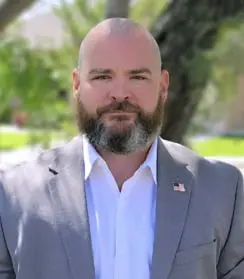 | 1 LU / HSW |
 | 1 LU / HSW |
In addition to serving the needs of students, faculty, and staff, supporting a positive learning environment, and enabling architectural intent, the design of an educational facility also must provide a safe and secure environment. With the uptick in violent events throughout the country—whether active shooter events, assaults, civil unrest, etc.—school administrators must plan for the safety of their staff, faculty, and students. Including security needs during the design phase provides the most effective and cost-efficient solutions for mitigating emergency events, avoiding the potential loss of life, and providing an overall robust security program. This presentation will provide educational facility designers with the insight and perspective of a security expert from an engineering consulting firm. Presenter Ryan Searles of IMEG Corp. will discuss the importance of involving security consultants early in the design and how doing so can save time, money, and lives.
Learning Objectives:

Ryan has 20 years of professional experience and spent almost a decade in the U.S. Army. After his military career, he worked as a contractor for the government, providing anti-terrorism and counter insurgency training for the different branches of the U.S. Military and foreign militaries. He conducted intelligence, counter terrorism, counter piracy, and foreign advisor operations across five continents. Ryan leverages his comprehensive background and certifications to provide various types of security assessments, CPTED design services, security design, crisis management, active assailant, life safety, and enterprise-wide security and risk management services for IMEG.
This track focuses on Resiliency and addresses how learning environments support the development of students and communities that have the strength and flexibility to withstand adversity and adapt to change. The COVID-19 pandemic demonstrated the essential role that schools have in stabilizing communities during a time of crisis. How do schools support the development of strong community culture among teachers and students? How do schools foster physical and mental health and wellness to ensure all are ready and supported to learn? How do we create learning environments that are strong in intent yet adaptable to change? How do we learn from what does not work and further, learn to take risks daily to expand our comfort zone? What can we learn from research and our responses to past events to inform how to build toward a resilient future where we can withstand what crises and challenges the future brings? Topic areas, seen through the lenses of both Art and Science, include sustainability, physical and mental health, community, school climate and culture, safety, and security.
Primary Core Competency
Design of Educational Facilities: Acts as a resource to the design team in providing ongoing guidance and support to ensure that the emerging and ultimate design aligns with the established community vision, education goals, future programming, written design standards, best/next practices and education policy.